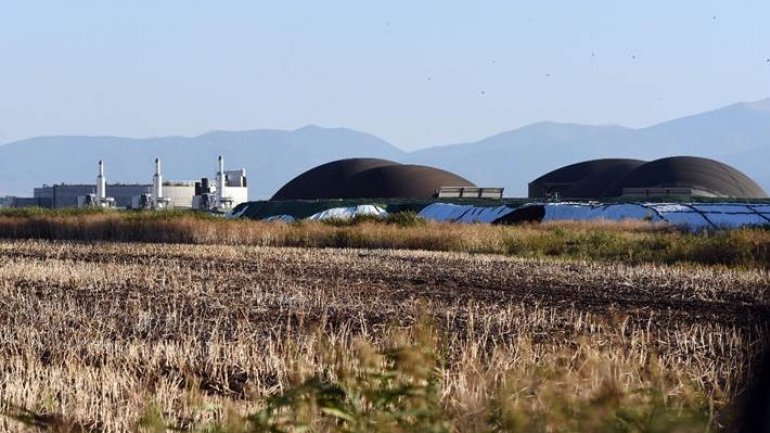New FAO and EBRD assessment studies which crop and livestock residues can be used for renewable energy
 foto: fao.org
foto: fao.org
Countries striving to meet their growing energy needs while also lowering greenhouse gas emissions are increasingly turning to renewables – such as hydro, wind and solar power – to reduce their dependence on fossil fuels.
One promising option, often overlooked by policy-makers, is to convert unused agricultural residues into bioenergy for heating, cooking and electricity. Nutshells, maize cobs, sunflower heads, and livestock manure are examples of agricultural residues.
Sustainable bioenergy options from crop and livestock residues, a new assessment by the Food and Agriculture Organization of the United Nations (FAO) and the European Bank for Reconstruction and Development (EBRD), explores this potential in three countries – Egypt, Turkey and Ukraine.
The work was part of the EBRD’s Sustainable Resource Initiative and builds on FAO’s Bioenergy and Food Security, or BEFS, approach.
“Clean and renewable energy is an important part of the solution to many of the environmental challenges we are facing,” said Emmanuel Hidier, senior economist in FAO’s Investment Centre. “Using locally available crop residues and manure that are otherwise unused, to produce bioenergy can be a sustainable alternative to fossil fuels.”
Many countries generate huge volumes of crop and livestock residues every year. At times the unused residues are burned – a significant source of greenhouse gas emissions. But even when residues are plentiful, collecting them and putting them to use for bioenergy production can be challenging and costly, with complex logistics and coordination between farmers and processing plants.
The new FAO-EBRD assessment examines which biomass value chains and technologies are technically feasible and have the potential to be profitable, and where the different feedstock sources – renewable, biological material that can be used directly as a fuel, or converted to another form of energy – are located.
In Egypt, for example, briquettes and pellets made from locally available crop residues could potentially supply around 1.6 million households with energy for cooking and heating – significantly reducing the use of liquefied petroleum gas.
Turkey, among the world’s top agricultural producers, wants 20 percent of its overall energy consumption to come from renewable resources by 2023. It also has a specific biomass target. According to the assessment, energy produced by the direct combustion of available groundnut husk, pistachio shell, hazelnut husk, maize cob and maize husk – and through the anaerobic digestion of cattle and poultry manure and sunflower heads – could be sufficient for the country to reach its biomass energy target.
While a full BEFS assessment was not carried out in Ukraine, a review of recent bioenergy studies on agricultural residues found that the estimated availability of crop residues is significantly greater than that needed to achieve the country’s bioenergy targets by 2020.
Tapping into the potential of bioenergy requires governments to put in place the right incentives, policies and support measures. The FAO-EBRD assessment outlines steps that governments should take to develop well-functioning biomass value chains that ensure a steady, long-term supply of agricultural residues.
“The BEFS approach helps policy-makers make informed decisions about bioenergy development in their country, while supporting both food security and energy security,” said Irini Maltsoglou, an FAO natural resources officer and one of the authors of the assessment.
Helping countries to improve their energy efficiency and energy savings is a priority investment for us,” said Gianpiero Nacci, deputy head of the EBRD’s Energy Efficiency and Climate Change team. “It reduces production costs, increases competitiveness and advances countries’ efforts to lower emissions and mitigate climate change.”
It also helps them to deliver on their international commitments under the Sustainable Development Goals and the Paris Agreement, which aims to limit the rise in global temperatures by the year 2100 to less than 2° C, compared with pre-industrial levels.
With countries eager to move towards energy security and sustainability, increased use of renewables – including from domestically produced agricultural residues – is becoming a no-brainer.